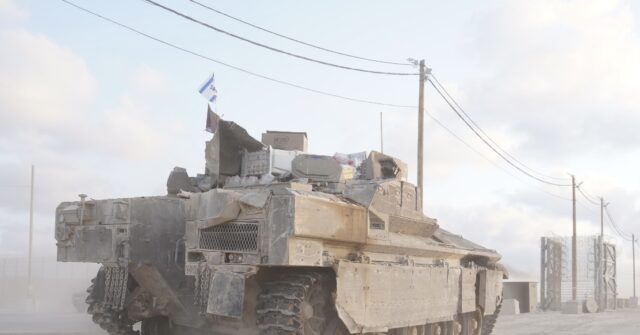The Israel Defense Forces (IDF) have escalated their military operations against Hamas in northern Gaza, focusing on the Jabaliya area, following gathered intelligence and assessments indicating significant terrorist infrastructure and activities associated with Hamas. In a strategic move, the IDF has warned residents in the region to evacuate while simultaneously expanding the designated humanitarian zone further south. This decision underscores the IDF’s commitment to dismantling Hamas’s operational capabilities, which the command believes are being rebuilt in Jabaliya. The 162nd Division, supported by the 401st and 460th Brigades, has initiated ground operations in the area, marking a critical phase in Israel’s ongoing military campaign against the militant group.
As part of the operational strategy, the Israeli Air Force (IAF) has executed airstrikes targeting multiple military facilities associated with Hamas. These strikes have included weapons storage sites, underground military infrastructures, and operational cells used by the organization. The scale of the air campaign reflects the IDF’s intent to create a conducive environment for ground operations aimed at systematically dismantling the terrorist infrastructure in northern Gaza. The IDF has indicated that this offensive will continue until all objectives are achieved, reinforcing the urgency of neutralizing Hamas’s operational capabilities.
Despite what the IDF claims is the destruction of Hamas’s battalions, the organization has reportedly shifted to a guerrilla fighting mode, suggesting that remnants of its operational capacity remain resilient and adaptable. This reaction emphasizes the complexities of modern warfare, wherein traditional military victories do not always translate to a complete dismantling of an opponent’s capabilities. As the IDF continues its assault on identified targets, it simultaneously prepares for the possibility of enduring conflict, indicating an ongoing commitment to address threats beyond Jabaliya in northern Gaza.
The situation has resulted in an unprecedented directive for residents of Nuseirat, located in the central Gaza Strip, marking the first evacuation order since the onset of the current conflict. This decision not only amplifies the scale of the military operation but also highlights the humanitarian crisis emerging from the conflict. The IDF’s actions, framed as necessary for national security, simultaneously contribute to growing humanitarian concerns as civilian populations are caught in the crossfire of military engagements.
On multiple fronts, the IDF’s operations are not confined to Gaza alone. The current military campaigns are taking place alongside continued engagements in southern Lebanon, illustrating a multi-front conflict that mirrors the broader regional tensions. This strategy symbolizes Israel’s perceived strengths and capabilities ahead of the anniversary of the October 7 attacks, reinforcing the narrative of resilience and readiness amidst external threats. The multifaceted military approach indicates a concerted effort to neutralize multiple threats that challenge Israel’s security landscape.
In the backdrop of these developments, public discourse around the conflict remains active, with figures such as Joel B. Pollak contributing to media narratives. Pollak, a senior editor at Breitbart News and an authority on political matters, provides insights into the ongoing situation. His commentary points to a broader interest in understanding Israel’s strategic decisions within the context of its regional security strategy and the implications of its military actions. As the situation evolves, the complexities of military operations, humanitarian impacts, and geopolitical implications continue to unfold, demanding close observation and analysis from both political leaders and international observers.

